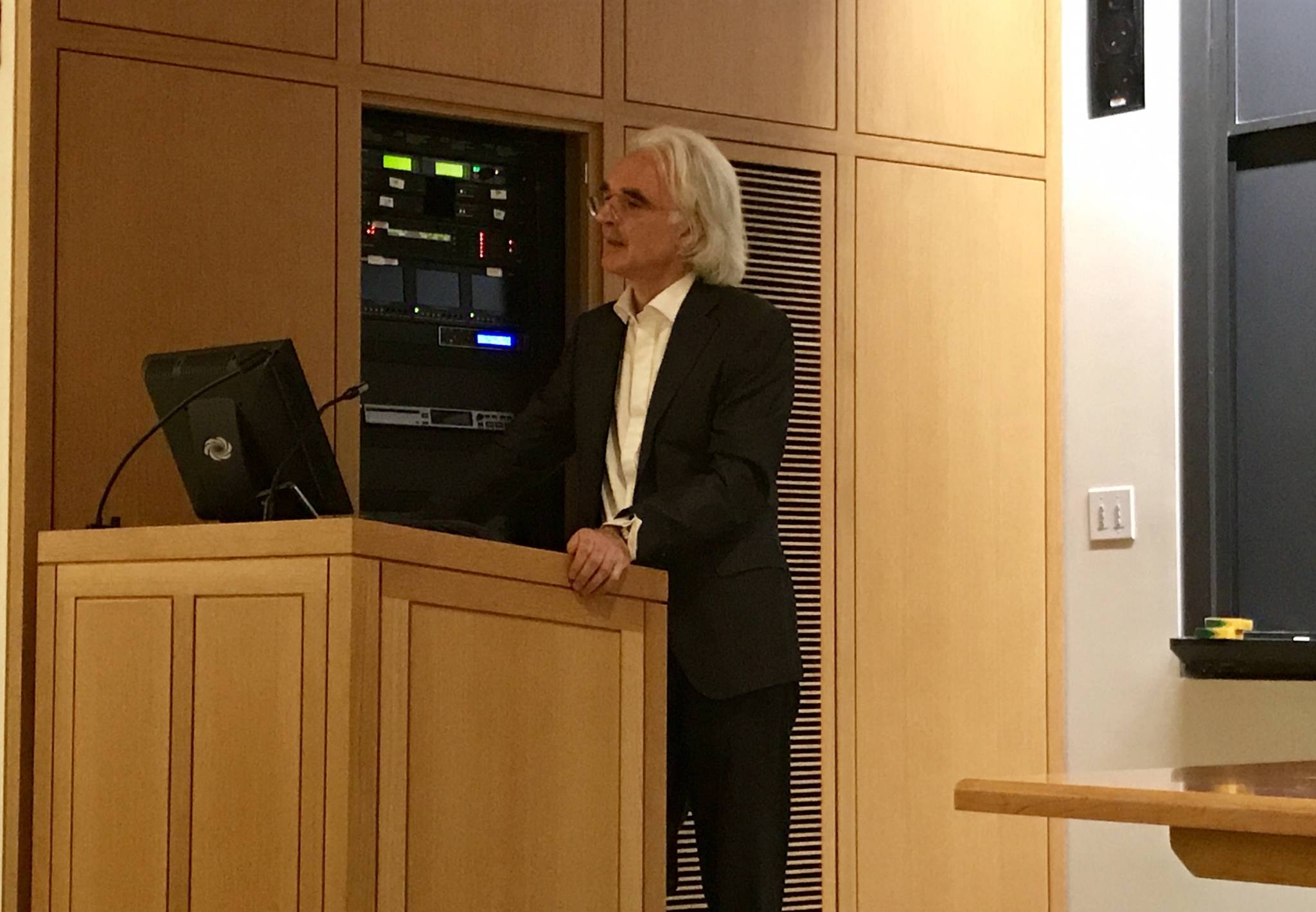John Kerrigan is a leading Shakespeare scholar and the Professor of English 2000 at the University of Cambridge. This fall, he was the Whitney J. Oates Visiting Fellow in the Humanities Council and the Department of English. The Humanities Council’s Short-Term Fellows Program brings scholars from around the world to Princeton for three-to-five intensive days of classes, colloquia and informal discussions. Kerrigan was in Princeton from Oct. 9-12.
In his Oct. 11 lecture, “Shakespeare Afoot,” Kerrigan explored the dramaturgy of the foot by looking at the theatrical uses of limping, pacing, stalking, tripping, and wandering in Shakespeare’s plays, including Richard III, As You Like It, and Macbeth. He returned to the old question of Shakespeare’s originality, or how Shakespeare used existing historical sources to put a unique twist on his plays.
Kerrigan opened the lecture with Richard III, the English king who reportedly had one shoulder higher than the other. Shakespeare’s depiction of Richard III as ill-shaped, crook-backed, and lame-armed was not a novel one; Richard’s disabilities are chronicled in numerous sources, including Thomas More’s History of King Richard III. Shakespeare’s originality, Kerrigan contended, emerges from Richard’s disability, which gives him a “trailing, erratic, provocative limp” that “dallies and threatens.” For Shakespeare, it is Richard’s disability that ultimately enables his vindictiveness.
Richard III’s signature limp offers just one example of Shakespeare’s innovative incorporation of footwork into his plays. According to Kerrigan, Shakespeare translated narrative action and the physicality it brought into walking. “Walking has rhythm, and verse and prose have feet,” Kerrigan explained. “The theater was a confluence of perambulators, the stage a labyrinthine space in which footwork was folded and opened up.”
In As You Like It, walking finds expression both in figuration and in displaced forms. “Walking is one powerful way in which As You Like It achieves originality,” Kerrigan argued. “It reminds us that actors walk on stage, talking. Often, in mature Shakespeare, they’re caught in mid-conversation, making entrances a continuation, as exits were not often an ending.”
Walking also appears as an important motif in Macbeth, which Kerrigan illustrated by invoking Macbeth’s soliloquy before the murder of Duncan. Kerrigan noted Shakespeare’s dramatization of Macbeth’s walk as every step he takes brings him closer to regicide. This dramatization of walking proved to be a critical component of the play; as an actor who played Macbeth said, “I try to get the feet right first.”
Kerrigan closed with a felicitous observation: “Shakespeare and his fellow actors made places with paces, whether they were in the Globe Theater, the Inns of Court, or under some greenwood tree. And they put their feet into their mouths whenever they had lines to speak.”
By Julie Clack, Office of Communications
















